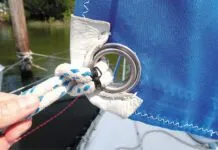All-Band Radios
I am finalizing plans for my first big venture out on the open water-Steve Blacks Bermuda Rally. The only thing I am lacking is a SSB (single-sideband radio). Though Steve has given me assurances that this piece of equipment is not essential (many sailors will be within 25 miles of each other with set radio checks), I may feel a little vulnerable out there without it. Cost is a big factor.
Ive been told that a cheaper alternative is a radio receiver that enables one to receive weather information, but I am not at all familiar with this. Ive searched all my back issues of Practical Sailor (I go back to June 84) with little luck. Can you give me some information on this type of radio?
G. Whalen
Via e-mail
In the July 1, 1991 issue we evaluated a number of all-band receivers. Twenty years ago cruising sailors often carried the Zenith Trans-Oceanic to pick up weather forecasts on and for the high seas. This was before SSB became so popular. The same services are still available, but from different radio companies. In our evaluation, we looked at Sony, Grundig, Sangean, DAK and Electro Brand. Our Best Buy was the Sangean ATS-803A. The Sony ICF-1020 is top rate. So is the Grundig Satellit 500. Beware of Asian knockoffs, like the Electro Brand, which is very poor.
A good source is Universal Shortwave, 6830 Americana Pkwy., Reynoldsburg, Ohio 43068-4113; 614/866-4267 or 800/831-3939, email: dx@universal-radio.com, www.universal-radio.com.
Headboard Holes
My mainsail headboard, as many Im sure, has two halyard attachment holes. Is there a function for the aft hole other than as backup?
Al Wissner
Tampa, Florida
The forward one is usually used for the halyard because it gives the best alignment for loading the sail slides. The after hole can be used either as a backup if the forward one tears out (it should have a reinforcing ring inside it), or, if your sail is stretched out, you can get more tension on the leech by attaching the halyard to the after hole. All this according to Aaron Jasper of Jasper & Bailey Sailmakers, Newport, Rhode Island.
Shackles
Ive seen mention in your publication of anchors, anchor rodes and anchor shackle seizing, but nothing on the issue of anchor shackle themselves. Ive generally used galvanized steel shackles to link anchor rodes to anchors, but have found that after a couple of seasons the shackle has rusted and the threaded part has seized. As a result, a hacksaw has always been necessary for removal.
Last year, I decided to try a stainless steel shackle to link the galvanized steel anchor rode to the Danforth Hi-Tensile anchor. Since I am primarily a week-end cruiser on the Chesapeake Bay the anchor does not spend much time under water, but it does sit in an anchor locker. Is this a good idea? How concerned should I be concerned about galvanic corrosion?
Eric Shulman
Alexandria, Virginia
A stainless shackle on a galvanized anchor shank is okay if kept clean and dry-not easy.
As Nick Nicholson reported in the August 1, 1998 Offshore Log, the main downside to a stainless anchor shackle is its tendency to wear off the galvanizing from the chain and anchor.
Better is a good galvanized shackle. Good galvanizing lasts for years. The best in the world are made by Crosby. They can be identified by the red-painted pin. The model we like is called a bolt-type shackle. The pin is a threaded bolt with a nut and a hole for a cotter pin. Be sure to occasionally lubricate the threads.
If you can’t find Crosby shackles in chandlers near you, contact The Crosby Group, Inc., Box 3128, Tulsa, OK 74101; 918/834-4611.



































